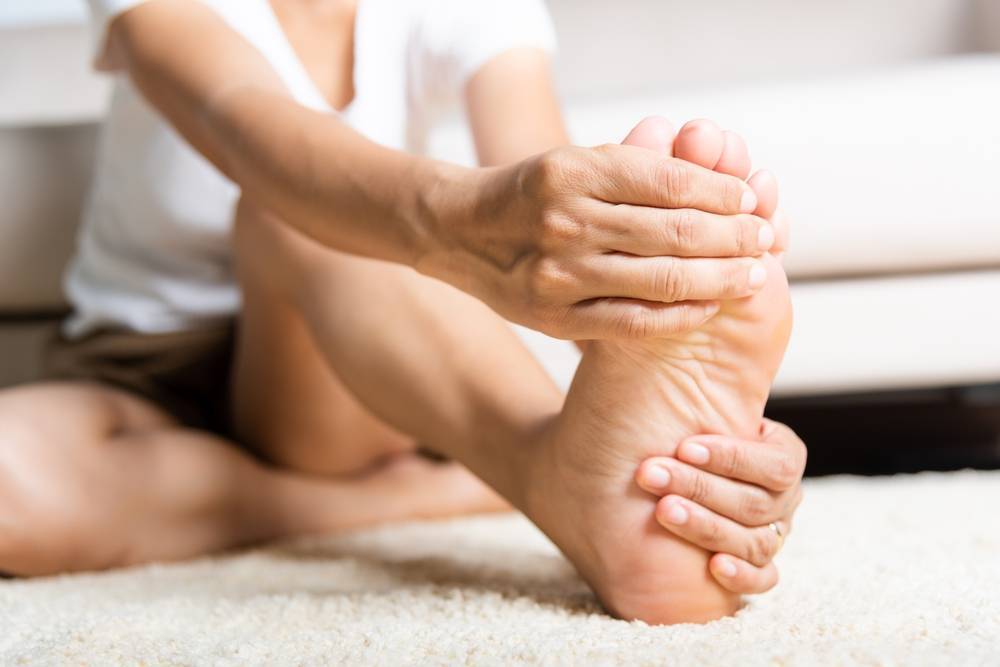Our feet sustain all our body weight when standing up and are susceptible to many stresses and injuries.
The foot is one of the most complex organs in our body. Each foot is made up of 26 bones connected by joints, tendons, muscles, and ligaments. This article will bring you 10 common foot health conditions you might encounter.
Athlete’s Foot
The athlete’s foot, or tinea pedis, is a fungal infection of the skin that begins between the toes. It is called so because it usually happens to people whose feet are always sweaty, like athletes for example. Typical symptoms include an itchy, scaly rash that can spread to other parts of the foot as well. Frequent cleaning with a topical antifungal cream usually relieves the symptoms. Changing your socks regularly, letting your feet dry out after showering or exercising, and washing your feet daily can all help to prevent this condition.
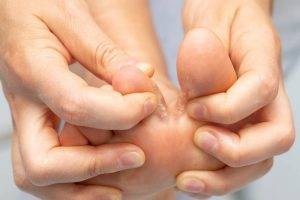
Blisters
Blisters are raised pockets of fluid from the skin on your foot. It can bring on pain and discomfort when walking or even with a gentle touch. Usually, it is due to ill-fitting shoes that cause excessive friction. Sweat and sunburn can also lead to blisters growing in some people. At home, patients can use a disinfected needle to make a small puncture on the blister, followed by cleaning with antimicrobial cream and alcohol.
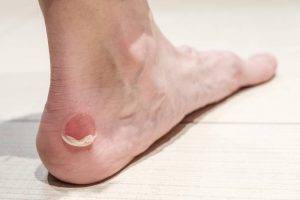
Heel Spur
As its name suggested, a tiny part of our heel bone can grow out and cause extreme pain when we put weight on our feet. It occurs because of excessive calcium intake or deposit that makes the heel bone grow. Cold compression, pain medication, physiotherapy or even surgery can help with the condition.
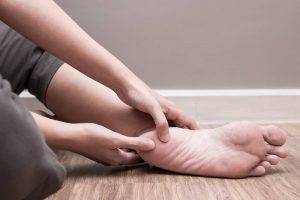
Gout
Gout is inflammatory arthritis that is very painful and frequently happens in the big toe. When there is excessive uric acid in our blood, urate crystals form and deposit in our joints. It causes local inflammation and agonizing pain. During a flare-up, anti-inflammatory and pain medication can help relieve the symptoms. Dietary changes are important to prevent further flare-ups, click here for more information.
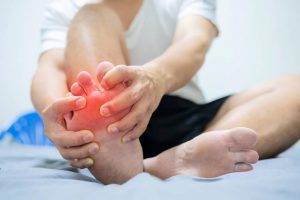
Ingrown Toenail
An ingrown nail frequently happens to the toe. Poorly trimmed nails, compressed toes, and certain genetic traits are major risk factors for the toenail to grow into the surrounding skin. Though it doesn’t necessarily cause much discomfort other than minor pain, the ingrown toenails may not heal and become infected and result in local bleeding. Usually, the ingrown toenail should be trimmed and taken care of by a medical professional as early as possible.
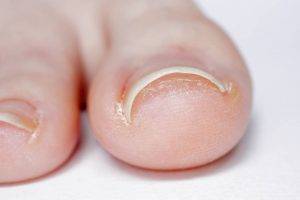
Fungal Nail Infection
Similar to the athlete’s foot, it is another fungal infection due to sweaty feet. The fungi can colonize the nails and cause nail damage. Symptoms develop slowly, and you might notice flaking yellow spots on your nail, accompanied by a bad smell and the nail might lift off from the nail bed.

Diabetic Foot Ulcer
Diabetes can cause peripheral neuropathy and vascular changes. As one of the most distal organs in our body, the foot is most frequently affected by complications of diabetes. Initial injuries combined with factors such as lack of neuronal and blood supply result in a chronic non-healing wound and subsequently develop a painless ulcer. The ulcers frequently present at pressure points and may lead to amputation if left untreated.
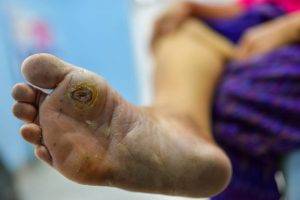
Plantar Fasciitis
Plantar fasciitis refers to inflammation of connective tissues at the base of the foot. We do not know what exactly causes this condition, but foot deformities, excessive training, and a long period of standing or weight-bearing could predispose to inflammation. Calf stretching exercises and heel shoe inserts can help relieve the pain. A steroid injection can be used in severe cases to reduce the level of inflammation.

Claw Toe
Claw toe refers to a condition when toes are bent into an abnormal claw-like shape to one side. It is predisposed by a high-arched foot type, muscle imbalances and rare neurological conditions. It could gradually get worse and make walking or standing painful. Swelling, corns and calluses are common in people with claw toes. Surgery and pain relief medications are commonly used as treatment.
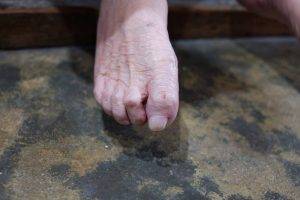
Bunion
A bunion or hallux valgus is a bony bump that forms on the joint at the base of the big toe. It is the most common forefoot deformity and happens more frequently in females than males. Biomechanical instability, poorly fitting shoe wear, and rheumatoid arthritis can all result in a bunion. People with the condition could be asymptomatic. However, in some people there might be pain and inflammation in the affected joints. Conservative therapy of symptomatic control is preferred over surgery.
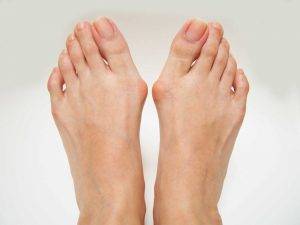
While each condition requires specific medications and treatments. Foot health is undeniably a medical discussion that needs more attention. To know more about how you can take better care of your feet read this article on 7 Tips to Improve Foot Health.

